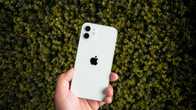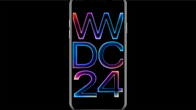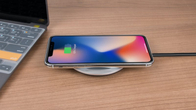
“Between the all-new three iPhones, which one should you pick?”
If you’ve been holding back to purchase the latest iPhones, then Apple has introduced not one, not two, but three smartphones. And if that wasn’t enough, each of them seem to be offering something unique. There’s the iPhone XS, which is an incremental upgrade to the last year’s iPhone X, while the iPhone XS Max is the biggest phone from the company yet. And instead of continuing its usual numbering convention for naming, the brand has launched the iPhone XR, which succeeds the iPhone 8. This lineup definitely looks quite interesting and seems poised to stir up smartphone markets worldwide. But which one is right for you? Well, in this article, let’s take a detailed look at how the iPhone XS, XS Max and XR are different from each other.
Table of Contents
Design and display

In terms of looks, the iPhone XS and the iPhone XS Max have straightaway imitated last year’s iPhone X (review). As for the iPhone XR, it has copied the iPhone 8’s appearance when it comes to its back, but it pretty much looks like the iPhone X from the front thanks to its notch-toting display.
The iPhone XS and XS Max have glass on both their sides, but the XR stays relatively old school with its series 7000 aluminium body. But while the former handsets are limited to space grey, silver and a new gold colour, the latter can be purchased in eye-catching options of black, red, yellow, blue and coral shades. Apple has upgraded the dust- and water-resistance on its flagship duo, with both the iPhone XS and XS Max IP68 certified. As for the iPhone XR, it sticks to the IP67 rating, which is still great, though can’t survive in as much depth as its expensive siblings.

It’s also significant that these are the first ever iPhones to come with the dual-SIM support. This is big, especially in a country like India, where lots of people tend to avoid buying iPhones as they only support single SIM.
In terms of the display, the Apple iPhone XS features a 5.8-inch OLED panel with a resolution of 2,436 x 1,125 pixels, while the ‘Max’ model comes with a 6.5-inch OLED screen bearing a resolution of 2,688 x 1,242 pixels. Both are HDR10-compliant panels with 3D Touch support and a 120Hz touch-sensing screen. The 6.1-inch LCD display on the iPhone XR ships with a lower resolution of 1,792 x 828 pixels, and doesn’t support 3D Touch. It does have the 120Hz touch-sensing screen though.
Hardware and software

All three new iPhones benefit from Apple’s powerful A12 Bionic 7-nanometer chipset, which comprise a hexa-core CPU and a quad-core GPU. And then there’s also an upgraded neural engine for advanced AI tasks. This means a huge increase in speed and capability, which was described brilliantly by Apple with an augmented reality demo during the unveiling of these phones. You will be able to purchase the new iPhones in 64GB, 256GB and 512GB storage options. Despite Apple having graduated to offering dual-SIM support, there’s still no scope for microSD slots on its iPhones.
In terms of the software, iOS 12 will be running the show on the new iPhones. Grouped notifications are a big highlight for these devices, while another addition is that of Screen Time, a trait meant to give you insights upon your app usage habits. Furthermore, it also lets you limit the usage of certain apps in case you feel like you’re wasting too much time on them. Face ID also gets an update and is now much faster than before.
Camera and battery

Just like the iPhone X, both the iPhone XS and the iPhone XS Max come with dual 12MP cameras. However, the primary sensors have been upgraded this time around, and the same goes for the image processing engine. With these phones, Apple has also introduced Smart HDR feature, which is aimed at delivering a high dynamic range in your photos. Another big addition is the option of adjusting the bokeh on your portraits after they have been clicked.

In contrast, the iPhone XR has just a single 12MP f/1.8 camera at the back. But a software-based portrait mode, à la the Pixel smartphones, is available on the handset. Similar to the iPhone XS duo, the iPhone XR also supports bokeh adjustments after clicking photos.
Coming to the front camera, it’s a 7MP unit in the new iPhones, but comes with a better sensor than the one on the last year’s iPhone X.
Apple hasn’t revealed the battery capacities on its new devices, but we do know that the iPhone XS and the iPhone XS Max boast slightly better battery life than their predecessor. As for the iPhone XR, it can last 90 minutes more than the iPhone 8 Plus.
Closing thoughts
These three new iPhones sure have managed to impress us with their specs and features. Those who like big phones and don’t mind the cost, can go for the top-of-the-line iPhone XS Max, while those who want something relatively affordable and handy, can opt for the iPhone XS. But it’s the iPhone XR that would probably attract the most buyers, for it’s more affordable and comes in peppy colours. In terms of the pricing and availability, the iPhone XS and XS Max will go on sale starting September 28th with a starting price tag of Rs 99,900 and Rs 1,09,900, respectively. The iPhone XR on the other hand, will be available to buy from October 26th with its prices starting at Rs 76,900.






![[Exclusive] iPhone 16 Pro CAD renders show off new button, bigger size, and more Thumbnail](https://www.91-cdn.com/hub/wp-content/uploads/2024/03/iphone-16-pro-cad-renders-feat.jpg?tr=h-110,q-100,pr-true)





